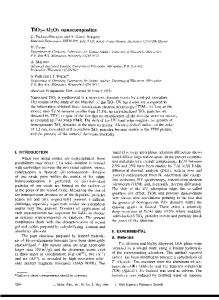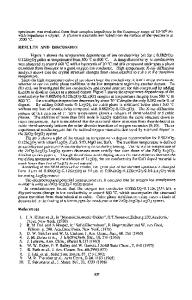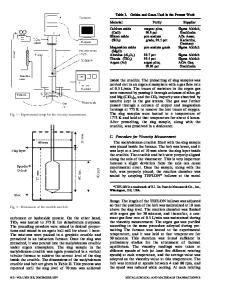Investigations of Surface Properties of SAW Fluxes Using CaO-SiO 2 -TiO 2 & Al 2 O 3 -CaO-SiO 2 Ternary Phase System
- PDF / 738,747 Bytes
- 9 Pages / 595.276 x 790.866 pts Page_size
- 73 Downloads / 335 Views
ORIGINAL PAPER
Investigations of Surface Properties of SAW Fluxes Using CaO-SiO2-TiO2 & Al2O3-CaO-SiO2 Ternary Phase Systems Lochan Sharma 1
&
Rahul Chhibber 2
Received: 6 May 2020 / Accepted: 14 October 2020 # Springer Nature B.V. 2020
Abstract In the present paper, investigation on wettability and contact angle measurement of twenty-one SAW fluxes for CaO-SiO2-TiO2 & Al2O3-CaO-SiO2 welding flux system at a temperature of 1300 °C was studied. Wettability observed by measuring the contact angle properties of twenty-one SAW fluxes. The purity of flux constituents determined by the XRF technique. Si-O-Si and Al-O-Al symmetric bond behaviour and various crystalline phases observed using FTIR and XRD techniques. Lower contact angle gives higher wetting and spreading properties. The contact angle increased with the increase of TiO2/SiO2 ratio. For the composition range 1.5 to 2.0, there is a higher value of contact angle observed. A maximum increase of contact angle noticed for the composition range 1.5 to 2.0. There is a constant rise in the amount of contact angle for the composition that varies from 1.0 to 1.2. Keywords Wettability . FTIR . XRD . Contact angle . Agglomeration . Rutile-basic submerged arc welding fluxes
1 Introduction In submerged arc welding, the thermomechanincal and electrochemical reactions occur at the welding pool during transferring of metallic elements to the weld. The transferring metallic elements are composed of different chemical compounds such as oxides, fluorides and carbonates and during welding these elements promote phase transformation. Dissolution process of different metallic elements and oxygen in the weld pool take place due to the contribution of all oxides from the fluxes. Oxide inclusions formed when these metallic elements react with oxygen and serve as nucleation sites for the formation of important phase such as acicular ferrite during submerged arc welding process. Presence of these phases (acicular ferrite) in the weld metal improves the impact toughness value. Submerged arc welding fluxes can influence the weld metal composition appreciably in the form of addition or * Lochan Sharma [email protected] Rahul Chhibber [email protected] 1
Mechanical Engineering Department, Chandigarh University, Gharuan, India
2
MED, IIT, Jodhpur 342037, India
loss of alloying elements through gas metal and slag metal reactions. To enhance the pipeline steel strength, various micro-alloying elements such as Mn, Si, and B added in the steel. This provides a solid solution with iron and gives appropriate strength to ferrite. By refining the ferrite grains, the yield strength increased. Solid state bainitic and martensitic phase transitions improve the steel strength although it results some decrease in the toughness [2–10]. Available literature suggests that the performance of low carbon micro-alloyed steel with a high value of yield strength depends on the availability of capable welding consumable. For SAW welding, the electrode committed to deliver shielding for the mo
Data Loading...











